Bug Garden Ideas: Create a Haven for Helpful Insects!
Creating a bug garden is a wonderful way to invite beneficial insects into your yard. Not only does it help the local ecosystem, but it also adds beauty and diversity to your garden space. Why not give nature a helping hand by making your garden a welcoming home for insects?
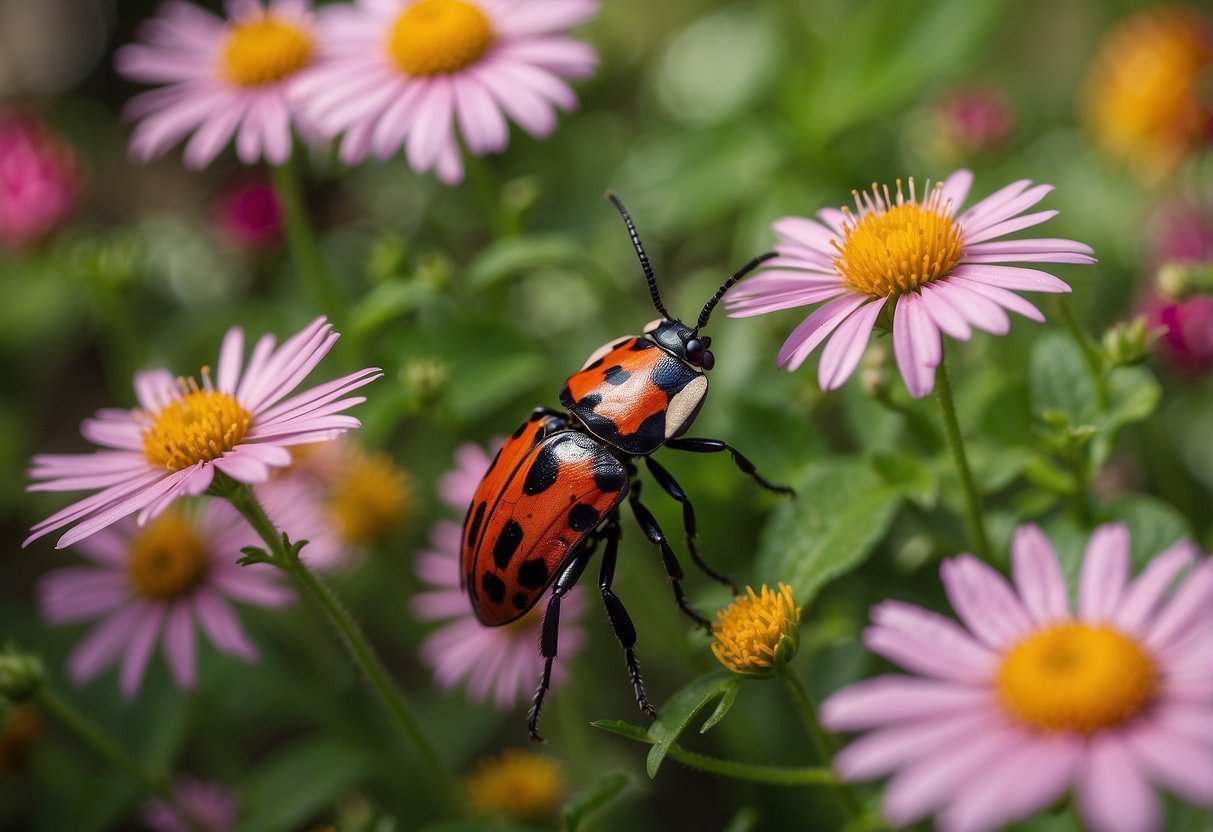
There are many simple ideas you can use to make your garden more inviting for bugs. From bug hotels to specific plant choices, there are plenty of ways to get started. By providing the right habitats, you can attract a variety of helpful insects that will thrive in your garden and keep it healthy.
1) Bee-Friendly Flower Beds

Creating bee-friendly flower beds is a wonderful way to support pollinators. Start by planting a variety of flowers that bloom at different times. This ensures a steady food supply for bees throughout the season.
Consider planting rhododendrons, which have beautiful, bell-shaped flowers. Another great choice is lantana, known for its colorful summer blossoms.
To add more variety, include a black locust tree in your garden. It has fragrant white flowers that bees love and provides lovely shade.
By choosing these plants, you help create a vibrant and bee-friendly space.
2) Butterfly Water Feeder

Creating a butterfly water feeder is a simple and fun way to attract butterflies to your garden.
You can use a shallow container or a terracotta saucer. Fill it with sand and water to provide a place for butterflies to drink.
Try adding some brightly colored stones to catch their attention. They will love visiting your garden for a quick drink.
3) Ladybug Houses

Creating a ladybug house can be a fun and rewarding project. Ladybugs help control pests in your garden, making them great little helpers.
To build a ladybug house, use scrap wood to make a small box with narrow slats. Adding a dish with sugar water and a damp cotton ball can attract and sustain them.
Check out this DIY guide for specific measurements and instructions to get started.
4) Pollinator Pathways

Creating pollinator pathways in your garden helps insects travel and find food. You can line pathways with flowers like butterfly bush and verbena that attract bees and butterflies.
Incorporate a variety of colors and shapes in your garden paths. Flowers in shades of blue, purple, and yellow are great for attracting bees. By adding blooming plants along your walkways, you provide food for pollinators all season long.
Consider placing small water features near the paths to attract birds as well. This will make your garden even more inviting for pollinators and add to its beauty.
5) Insect Hotels

Insect hotels are a great way to encourage beneficial insects to visit your garden. These little structures help provide shelter and nesting spaces for creatures like ladybugs, bees, and beetles.
To build one, start with a wooden frame. Fill it with materials like bamboo canes, dry leaves, and hollow stems to create multiple “rooms.” You can find more ideas for filling your hotel with natural materials at Craftionary.
Placing your insect hotel against a shed wall can also add charm to your space while attracting helpful bugs. For inspiration, check out these bug hotel ideas.
6) Native Wildflower Gardens
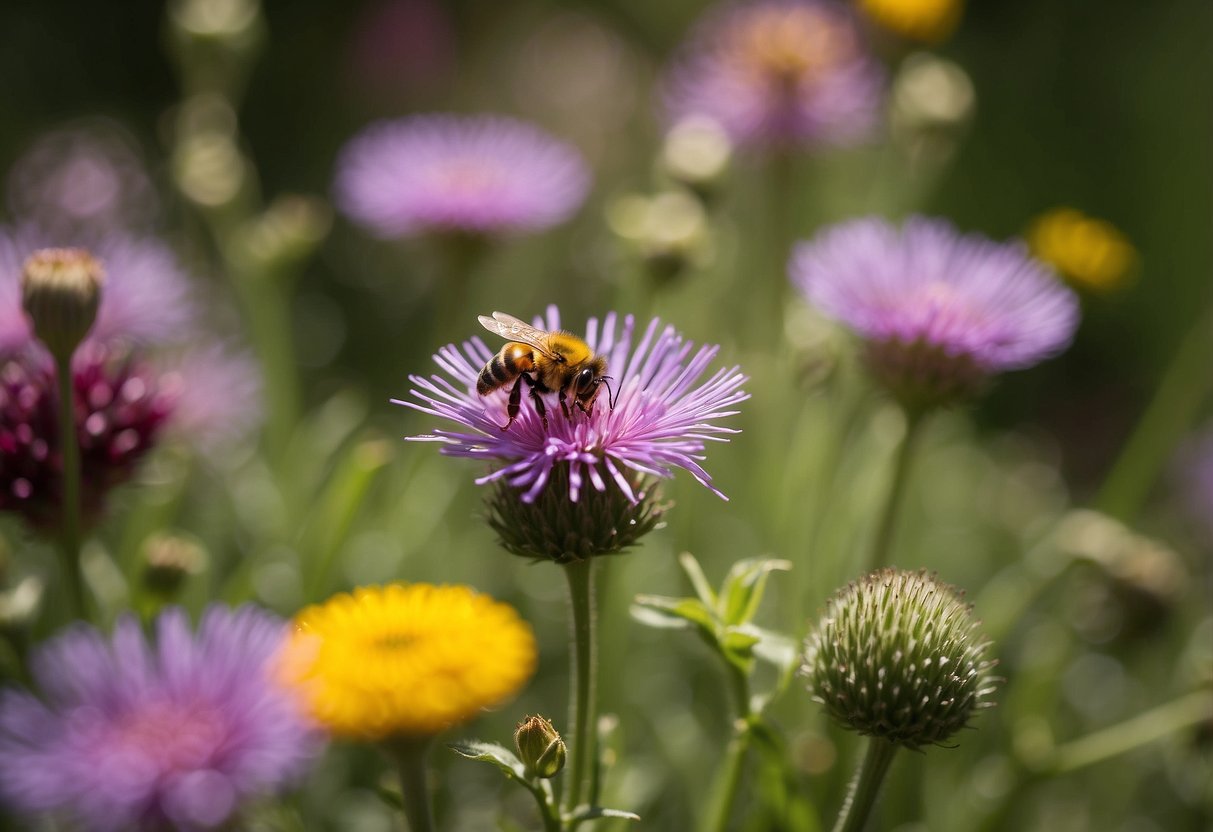
Native wildflower gardens bring a touch of natural beauty to your yard. These gardens are perfect for attracting pollinators like bees, butterflies, and birds. They require careful planning to ensure that the flowers thrive in your local climate.
Choose native plants that suit your garden’s sun and soil conditions. Group plants with similar water needs together. Consider adding wildflowers like tickseed, black-eyed Susan, butterfly weed, wild asters, and verbena. These plants not only look beautiful but also support local wildlife.
Remember to keep the soil moist until the seeds germinate. Regular watering helps your new wildflower garden flourish.
7) Herb Gardens for Beneficial Insects

Planting specific herbs can attract helpful insects to your garden. For example, Bee Balm attracts not just bees, but also butterflies and hummingbirds.
Another great choice is Yarrow. This herb attracts a wide variety of beneficial insects like ladybugs and damsel bugs.
Cilantro is another excellent herb for your garden. It has an uncompetitive nature and attracts bugs like syrphid flies and beetles.
8) Bug Baths
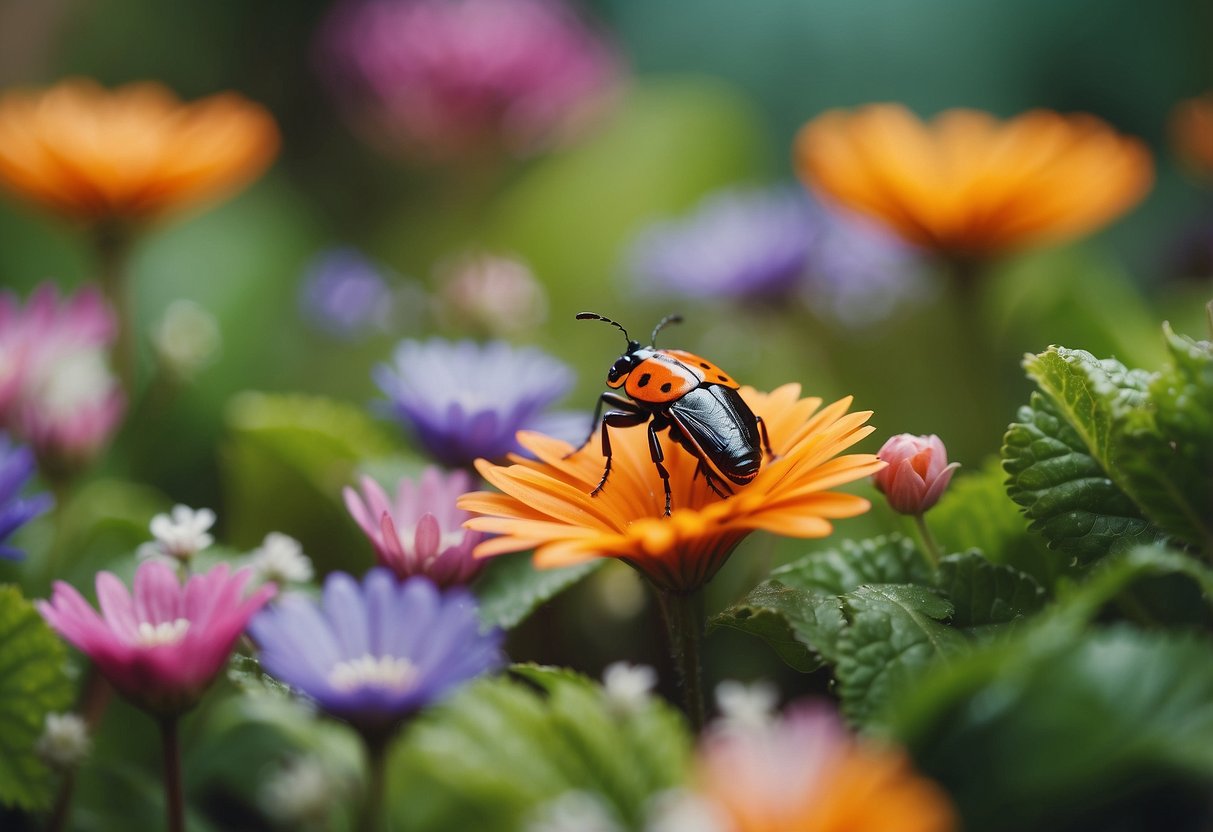
Creating a bug bath in your garden is a fantastic way to help keep insects hydrated. Choose a shallow dish or a saucer and place it in a shady spot.
Fill the dish with fresh water and add a few pebbles or stones. This will give insects a place to land and drink safely. Refill the water regularly and make sure it’s always clean.
For added appeal, consider placing the bug bath near your bug hotel. This encourages insects to stay in the area, ensuring your garden remains lively and buzzing.
9) Compost Piles for Decomposers
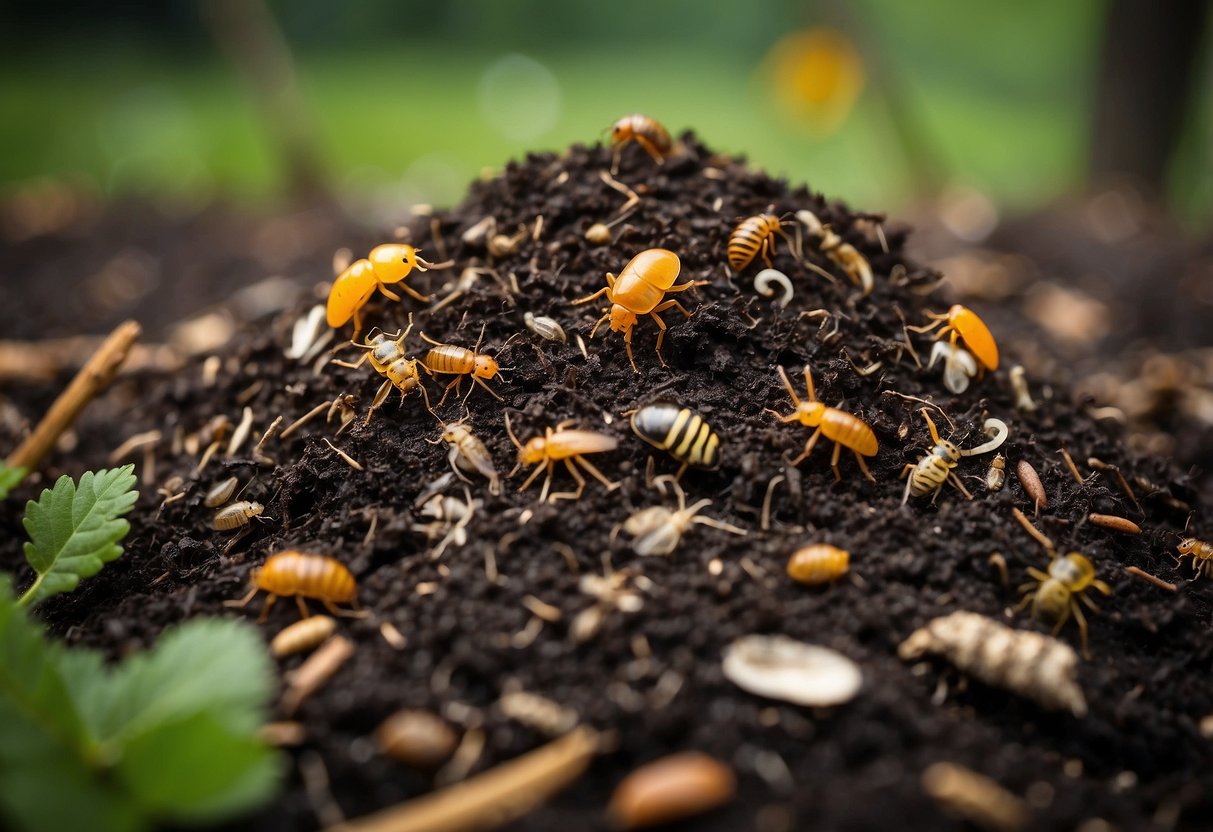
Creating a compost pile is great for decomposers like beetles, worms, and grubs. These bugs help break down organic material, making rich soil for your garden.
You can attract helpful beetles and worms by adding kitchen scraps, leaves, and grass clippings to your compost. Keep the pile moist like a squeezed-out sponge for best results.
If you see ants, it might mean your pile is too dry. Adding more water or turning the pile can help balance it. For more tips on managing bugs in your compost, check out Managing bugs in your compost.
10) Vegetable Gardens with Companion Planting
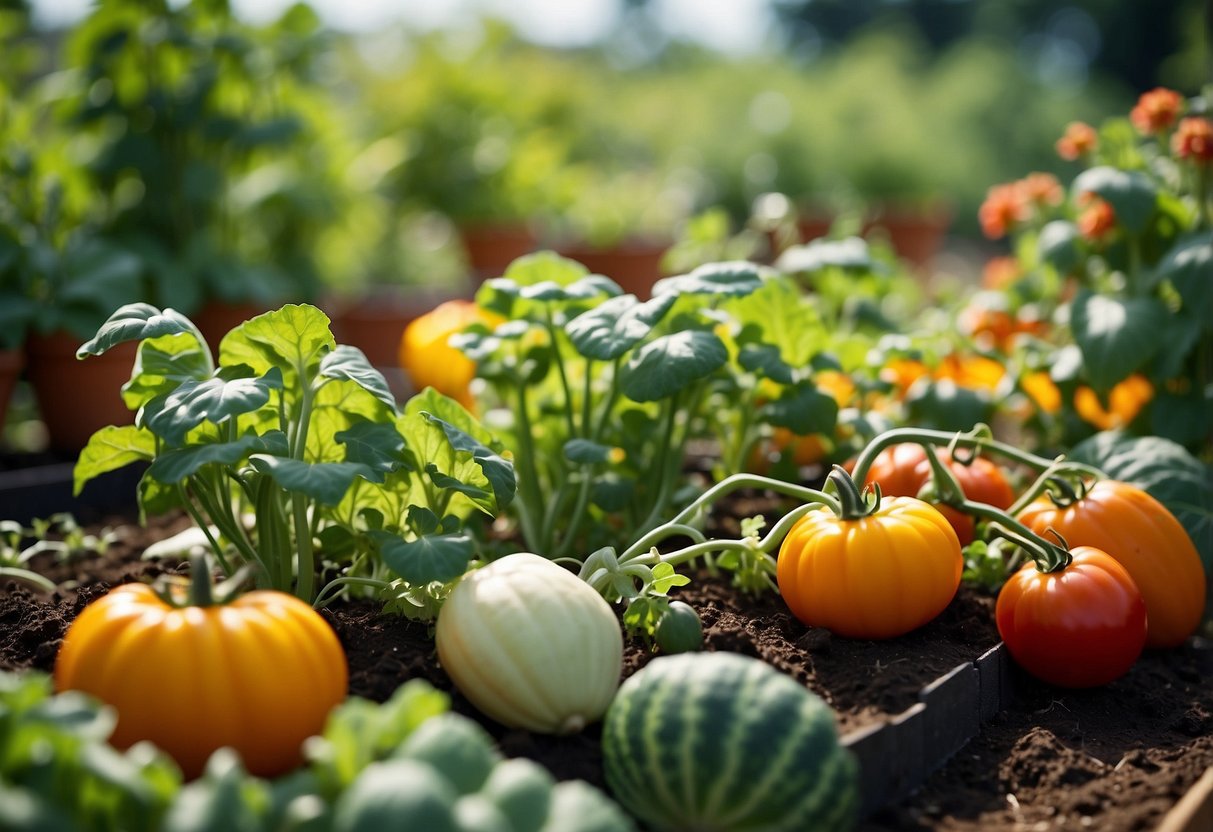
Companion planting in vegetable gardens can improve growth and reduce pests. By planting certain vegetables together, you can create a balanced ecosystem.
For instance, tall plants like corn can provide necessary shade for lettuce. Lettuce thrives in cooler conditions, so this partnership works well.
Additionally, beans can fix nitrogen in the soil, which benefits heavy-feeding plants like tomatoes. Combining these plants can make your garden more productive.
Pairing plants like basil with tomatoes can also help ward off insects. Basil’s strong scent can deter pests, helping to keep your crops healthy. This method is both simple and effective.
You can learn more details from this companion planting guide.
Benefits Of A Bug-Friendly Garden

A bug-friendly garden can bring many positives to your outdoor space.
Natural Pest Control
Insects like ladybugs and spiders will eat pests that harm your plants. For instance, ladybugs feast on aphids and spider mites. This reduces the need for chemical pesticides and keeps your garden healthy.
Pollination Boost
Bees and butterflies are great pollinators. By attracting bees with clover, your plants will produce more fruits and flowers. This means a more colorful, productive garden.
Soil Health Improvement
Certain bugs, such as beetles and woodlice, help break down organic matter. This process enriches the soil with nutrients, making it better for plant growth.
Biodiversity
Having a variety of insects supports a balanced ecosystem. This balance helps control pests and promotes plant health. Native flowers are great for attracting a diverse range of beneficial insects.
Reduced Maintenance
With bugs handling pests and helping plants grow, you’ll spend less time and effort on garden maintenance. Planting goldenrod or zinnias can help attract useful insects like soldier beetles, which eat aphids and grasshopper eggs.
By creating a bug-friendly garden, you support an ecological balance and enjoy a healthier, more vibrant garden space. Explore ideas for an insect garden here.
Choosing The Right Plants

Selecting the perfect plants for your bug garden is essential to attract beneficial insects and keep pests away. Focus on native plants that thrive in your area and add herbs and flowers that repel unwanted bugs while inviting friendly ones.
Native Plants
Native plants are adapted to your local climate and soil, making them ideal for your bug garden. They attract local pollinators and beneficial insects like ladybugs and lacewings. For example, Vitex agnus-castus is known for drawing butterflies and beneficial insects in areas like California.
Native plants also require less water and maintenance. Look for plants that are hardy and resistant to local pests. They establish quickly and provide a healthy habitat for various insects.
Benefits of native plants:
- Low maintenance
- Attract local pollinators
- Support beneficial insects
Consider incorporating borage, which attracts bees and adds nutrients to the soil. These plants not only bring beauty to your garden but also promote a healthy ecosystem.
Herbs And Flowers
Herbs and flowers can be a big help in keeping pests away while encouraging beneficial insects. Thyme has a pleasant fragrance and is edible; it also repels common garden pests. Lavender attracts bees and butterflies, while its scent deters mosquitoes.
Marigolds, known for their bright blooms, repel nematodes and other pests. Planting chives or basil not only adds flavor to your kitchen but also keeps aphids and mites at bay.
Consider these herbs and flowers for your garden:
- Thyme: Repels pests and is edible
- Lavender: Attracts pollinators, repels mosquitoes
- Marigolds: Bright blooms, deters nematodes
- Chives: Repels aphids, mites
Using a mix of herbs and flowers creates a vibrant, functional garden space that supports your gardening goals.
Creating Natural Habitats

You can support garden wildlife by providing essential resources like water sources and shelters. Here are some practical ideas to help you create a welcoming environment for insects and other small creatures.
Water Sources
Water is crucial for attracting wildlife to your garden. To create a welcoming water source, consider adding a birdbath, shallow dish, or small pond. These can provide drinking water for birds, insects, and other creatures.
Remember to change the water regularly to keep it clean. Mosquitoes can be a problem, so using a small pump to keep the water moving can help prevent them from breeding. Installing a tiny waterfall or fountain can also add interest and keep the water fresh.
In addition to attracting insects like butterflies and bees, water sources can also invite amphibians such as frogs and toads, which are excellent for natural pest control. Make sure your water features have gently sloping sides or ramps to allow small creatures to easily escape.
Shelters And Nest Sites
Providing shelters and nest sites is key to supporting wildlife. Use various materials like logs, rocks, and dense shrubs to create hiding places. Insects such as ladybugs and bees will appreciate these areas for protection and breeding.
You can even build or buy insect hotels. These structures can house solitary bees, ladybirds, and other beneficial insects. Place them in sunny spots for the best results. Leaving some deadwood and leaf litter in your garden can also provide essential habitat for insects and other animals.
Birds need nesting sites too. Planting trees and shrubs can offer places for them to build nests. Hanging birdhouses in quiet, sheltered spots may also attract different bird species. By providing diverse shelters, you encourage a variety of wildlife to make your garden their home.







